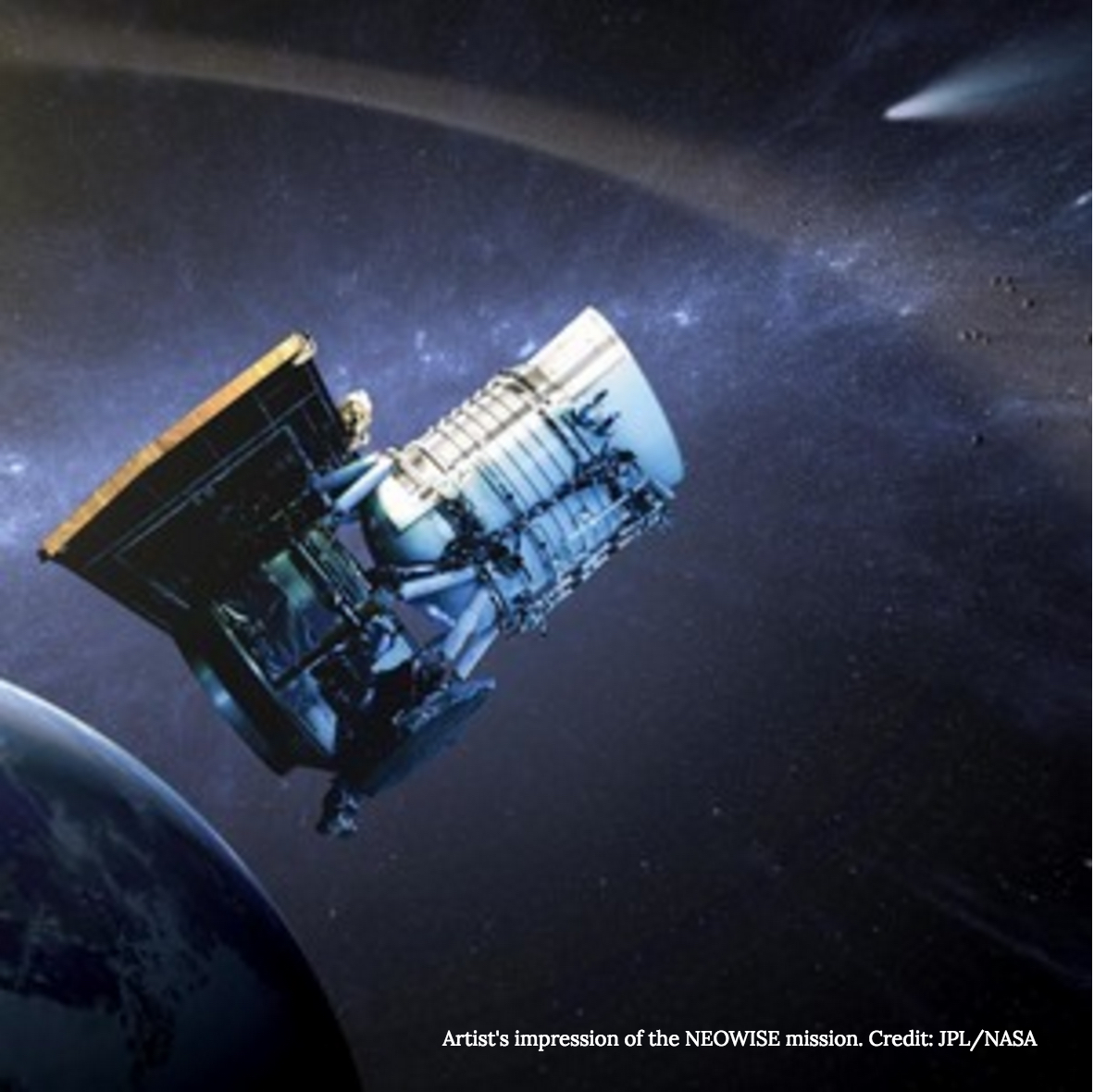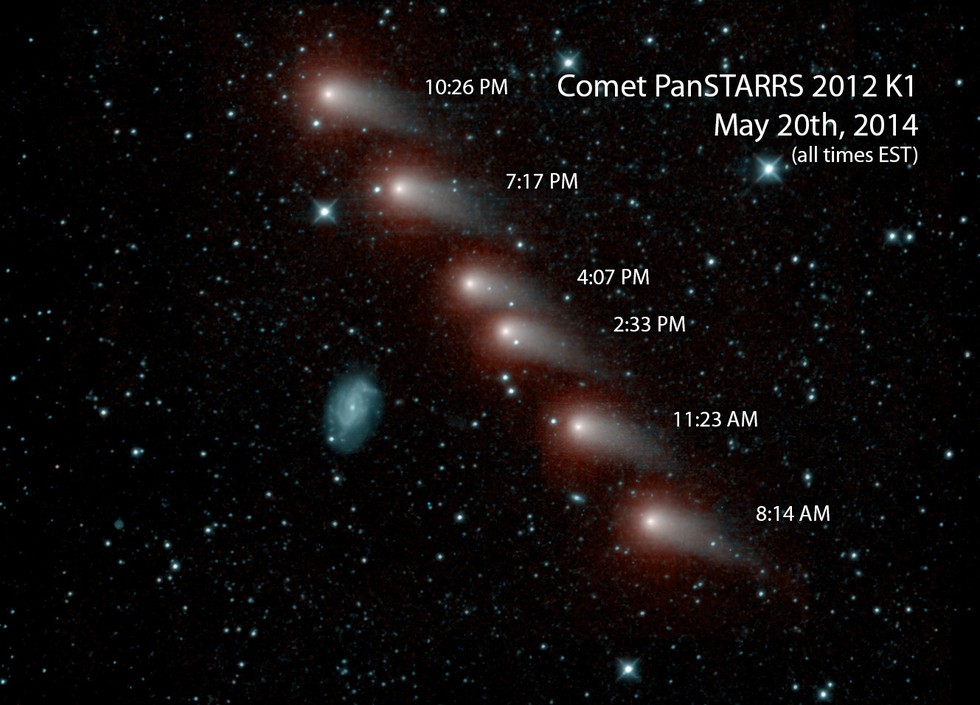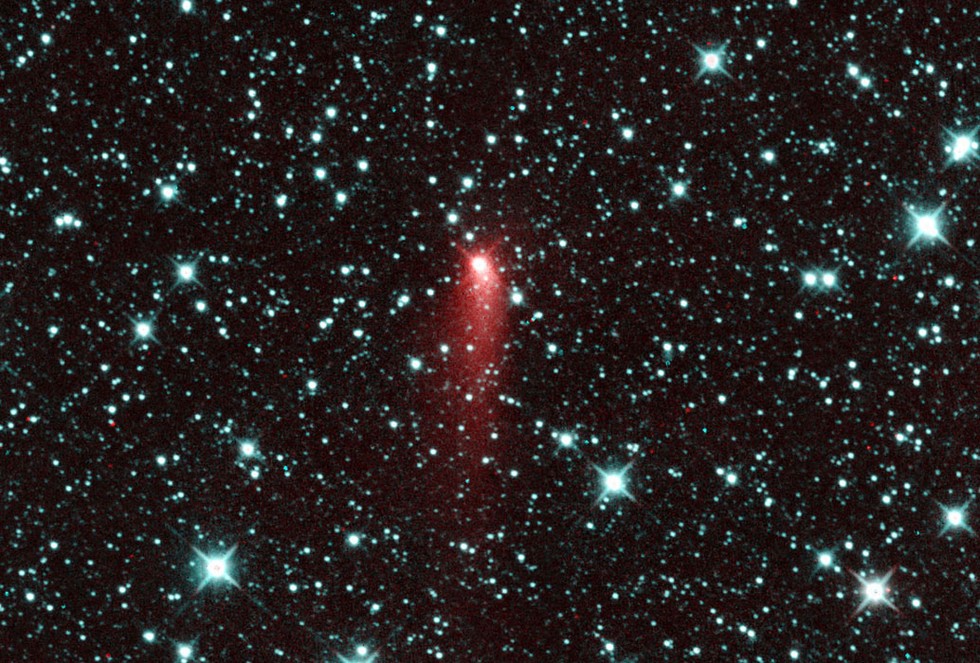NEOWISE Boosts Potentially Hazardous Asteroid Finds

After two years of operations, the NEOWISE space mission is consistently beating ground-based telescopes in its fraction of detected possibly dangerous asteroids to Earth.
While overall near-Earth NEOWISE asteroid discoveries are tiny — this NASA site says NEOWISE found 34 in its second year — 13 of those asteroids have orbits that bring them really close to Earth, putting them in the "potentially hazardous" category. As a fraction of discoveries, NEOWISE's haul of potentially hazardous asteroids exceeds ground-based surveys by a factor of three, a new paper says.
RELATED: New Asteroid-Hunting Technique Could Zero-In on More Threats
The paper (available on Arxiv and set to publish in the Astronomical Journal) was released just before its investigators find out if the successor mission to NEOWISE will be approved. Called NEOCam or Near-Earth Object Camera, the mission is one of five being considered for NASA's next round of lower-cost Discovery-class missions. A decision is expected in September, with the selected mission launching in 2021.
Meanwhile, NEOWISE is still going strong as it enters its third and likely final year of operations in Earth orbit, according to status updates on the website. In 2017 it is expected to enter an orbital zone too sunny for observations.

"As of mid-June 2016, NEOWISE has completed its fifth coverage of the entire sky and is beginning the sixth pass," the website says, adding that 541 near-Earth objects and 99 comets have been surveyed so far (among more than 20,000 solar system objects).
The investigators are now reprocessing the mission data to seek asteroids and comets at even fainter magnitudes. They're also cataloging the asteroid and comet properties they have to deliver to NASA's Planetary Data SystemPlanetary Data System.
Get the Space.com Newsletter
Breaking space news, the latest updates on rocket launches, skywatching events and more!
RELATED: Oddball Asteroid Outcasts Spied by Infrared Space Telescope
NEOWISE comes from a base telescope has already endured a two-year hibernation and subsequent restart since the first mission, the Wide-field Infrared Survey Explorer (WISE), launched in 2009.
WISE scanned the sky in four infrared wavelengths until its coolant ran out in 2010. NEOWISE began as a four-month mission scanning the sky in 2011 using the two shortest wavelength detectors. NEOWISE went into hibernation in 2011, then was brought out again in 2013.

Among NEOWISE's major contributions to asteroid science is refining the size of many known asteroids. In its second year alone, 84% of the 207 near-Earth asteroids NEOWISE observed were missing precise diameters and albedos (brightness) until it did measurements.
"Using visible wavelengths of light, it is difficult to tell if an asteroid is big and dark, or bright and small, because both combinations reflect the same amount of light," Carrie Nugent, a NEOWISE scientist at the California Institute of Technology, explained in a 2015 NASA press release.
Top 10 Way to Deflect Asteroids
"But when you look at an asteroid in the infrared with NEOWISE, the amount of infrared light corresponds with how big the asteroid is, and with some thermal models on a computer, you can figure out how big the asteroids are."
The new paper summarizing NEOWISE's second year was led by Nugent and co-authored by NEOWISE principal investigator Amy Mainzer. Both were unavailable for interviews before this article's publication date due to work on a large project, they told Discovery News.
Originally published on Discovery News.
Join our Space Forums to keep talking space on the latest missions, night sky and more! And if you have a news tip, correction or comment, let us know at: community@space.com.

Elizabeth Howell (she/her), Ph.D., was a staff writer in the spaceflight channel between 2022 and 2024 specializing in Canadian space news. She was contributing writer for Space.com for 10 years from 2012 to 2024. Elizabeth's reporting includes multiple exclusives with the White House, leading world coverage about a lost-and-found space tomato on the International Space Station, witnessing five human spaceflight launches on two continents, flying parabolic, working inside a spacesuit, and participating in a simulated Mars mission. Her latest book, "Why Am I Taller?" (ECW Press, 2022) is co-written with astronaut Dave Williams.









